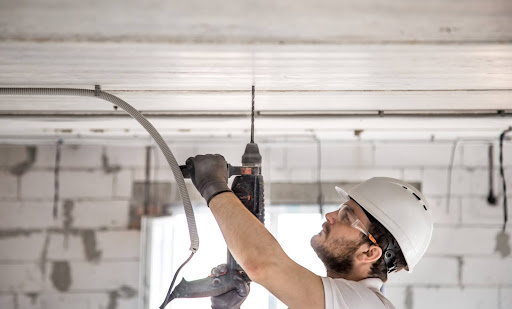- Home
- Articles
- Architectural Portfolio
- Architectral Presentation
- Inspirational Stories
- Architecture News
- Visualization
- BIM Industry
- Facade Design
- Parametric Design
- Career
- Landscape Architecture
- Construction
- Artificial Intelligence
- Sketching
- Design Softwares
- Diagrams
- Writing
- Architectural Tips
- Sustainability
- Courses
- Concept
- Technology
- History & Heritage
- Future of Architecture
- Guides & How-To
- Art & Culture
- Projects
- Interior Design
- Competitions
- Jobs
- Store
- Tools
- More
- Home
- Articles
- Architectural Portfolio
- Architectral Presentation
- Inspirational Stories
- Architecture News
- Visualization
- BIM Industry
- Facade Design
- Parametric Design
- Career
- Landscape Architecture
- Construction
- Artificial Intelligence
- Sketching
- Design Softwares
- Diagrams
- Writing
- Architectural Tips
- Sustainability
- Courses
- Concept
- Technology
- History & Heritage
- Future of Architecture
- Guides & How-To
- Art & Culture
- Projects
- Interior Design
- Competitions
- Jobs
- Store
- Tools
- More
How to Install Drywall: What the Law Says About DIY vs. Hiring a Pro

Drywall forms the backbone of walls and ceilings in most homes and offices. For anyone dealing with architecture and construction, understanding how to install drywall correctly is vital. However, this task involves more than just placing panels on frames. When you start such a project, you must consider legal rules regarding who can handle the work and how it must be done.
Table of Contents
ToggleDrywall and Legal Aspects of Installation
Putting drywall into place involves legal requirements that homeowners sometimes overlook. Depending on your location, there may be regulations related to safety codes or fire-resistant materials. For instance, certain rules apply to installations in garages or walls shared by multiple units in an apartment building. If you ignore these rules, it can lead to fines or safety hazards.
Another thing to consider is the documentation. If you hire a professional contractor, you must sign an agreement that will outline all the details of your cooperation. Upload a drywall contract template from a reliable legal platform, like Lawrina, and specify the terms for costs, timelines, and materials. In case any issues arise during or after the installation, this document will help you deal with them and apply for compensation. Popper documentation is very important when you cooperate with independent contractors as it guarantees you will not have to take legal responsibility for other people’s mistakes.
Pros and Cons of DIY Drywall Installation
The decision to tackle the project on your own can seem appealing, especially if you deal with smaller spaces or minor repairs. So, here are the arguments you need to consider:

Pros:
- Lower expenses: By skipping labor costs, you spend money only on tools and materials.
- Learning valuable skills: If you figure out the basics of how to do drywall, you’ll rely less on contractors in future projects.
- Freedom of choice: Handling the work yourself gives you the ability to control every step, from material selection to the timeline.
Cons:
- Time investment: Completing drywall installation steps takes time, especially if this is your first attempt.
- Physical effort: The installation drywall process requires heavy lifting, precise cutting, and placing sheets accurately. This can be exhausting.
- Possible mistakes: Lack of experience may result in uneven seams, poorly aligned joints, or panels that don’t last as long.
Repairing a small hole in a wall can work well as a DIY project. However, larger jobs, such as constructing walls in a newly added room, may turn into a frustrating experience. If something goes wrong, you’ll be the only one responsible for the damage.
Hiring a Professional for Drywall Installation
While taking the DIY route makes sense for some projects, hiring an expert for drywall work offers its own benefits. Professional contractors often complete the task faster and adhere to specific regulations, but this option also brings added costs and less direct control over the process.
Pros:
- Precise workmanship: A professional knows how to install drywall with clean seams, even panels, and minimum waste.
- Legal compliance: Experts are aware of legal requirements in their area, which reduces the risks of fines or the need to redo the work.
- Quick completion: Professionals have the tools and expertise to complete projects faster than most first-time DIY attempts.
Cons:
- Higher costs: Budgeting for professional work often requires a considerably higher financial investment due to labor charges.
- Less involvement: Allowing a contractor to lead the process means you have fewer decisions over final details or timing.
- Finding a trusted expert: The search for the right contractor takes time and effort, which adds complexity.
Hiring a contractor becomes more useful when you need to build walls in a commercial property or deal with fire-rated drywall. This type of work requires special knowledge and specific materials that experts handle better.
Things to Consider Before Installation
Whether you’re going to deal with the task yourself or hire a contractor, you have to plan everything properly to reduce issues along the way. So, before the final decision, consider the following things:
- Legal requirements: Research local building codes. Some areas require permits or set clear rules for thickness, material choice, and safety standards.
- Project size: Assess the scale of the work. A single wall may work as a DIY project, but adding drywall throughout an entire home is a much larger task.
- Time constraints: Determine how quickly the project needs completion. This will affect whether it is manageable for you or better suited for a professional.
- Material needs: Create a detailed list of supplies, including drywall sheets, joint tape, screws, and finishing mud. Missing items slow down the process.
- Budget limits: Compare the cost of purchasing your own tools and doing the work versus paying for a contractor’s services.
- Personal expertise: Reflect on whether you know how to install drywall or would need extra guidance. Watching online tutorials might help.
Conclusion
Choosing whether to install drywall on your own or hire an expert depends heavily on your situation. Smaller repairs or single-room renovations may be better suited for the DIY approach, where you’ll save money and develop hands-on skills. Larger projects, or those that involve following specific legal standards, are often easier and more efficient when handled by professionals.
illustrarch is your daily dose of architecture. Leading community designed for all lovers of illustration and #drawing.
Submit your architectural projects
Follow these steps for submission your project. Submission FormLatest Posts
Why a Mortgage Broker Can Secure a Better Home Loan Than Your Bank
Your choice between a mortgage broker and bank can substantially affect your...
Process Server: Role, Requirements, and How to Hire the Right One
Introduction A process server is a neutral professional who delivers legal documents...
Step-by-Step Smart Home Setup Checklist
The process of developing a smart home system is an exciting one...
Top Modern and Stylish Bathroom Architectures In 2026
Bathroom design, much like other aspects of interior design, is always changing...











Leave a comment